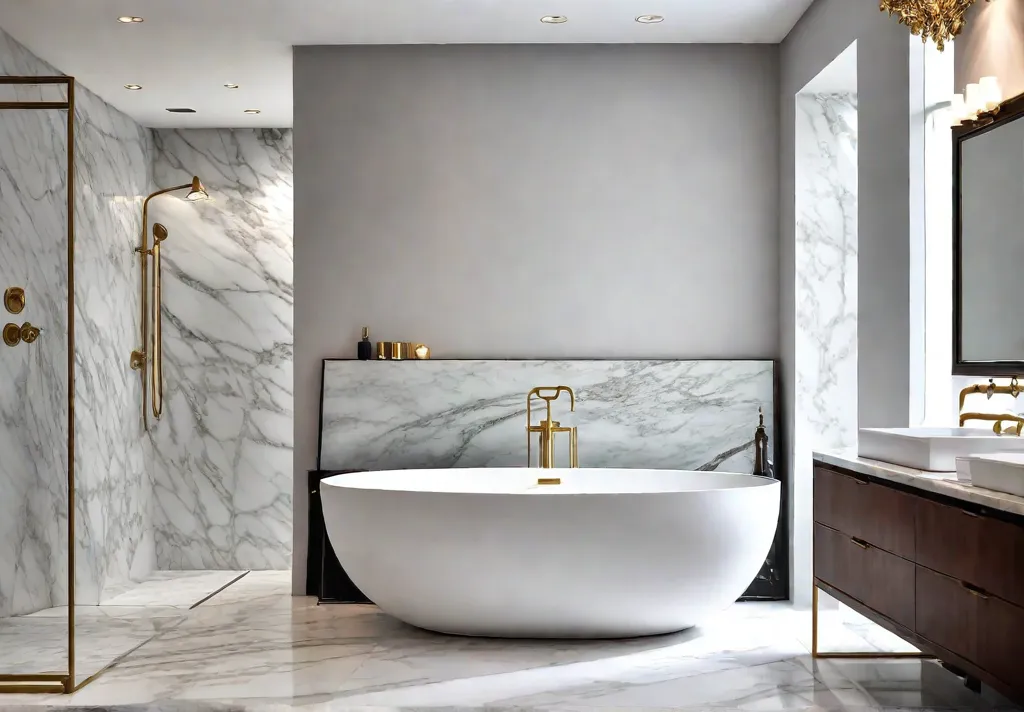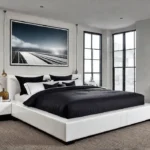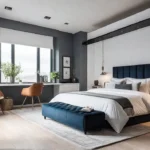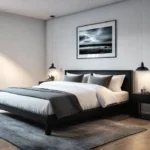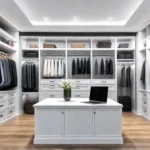If your bathroom still has the classic white subway tile look, it might be time for an upgrade. Bathroom design has come a long way, with homeowners and designers exploring all sorts of innovative materials, patterns, and technologies to create truly unique and personalized spaces.
Gone are the days of boring, one-size-fits-all bathrooms. Today, you can transform your master bath into a spa-like oasis or a chic, modern retreat – and it all starts by thinking beyond the standard subway tile. Whether renovating from scratch or simply looking to refresh your existing space, this article will guide you through the latest bathroom design trends that will inspire your dream master bath.
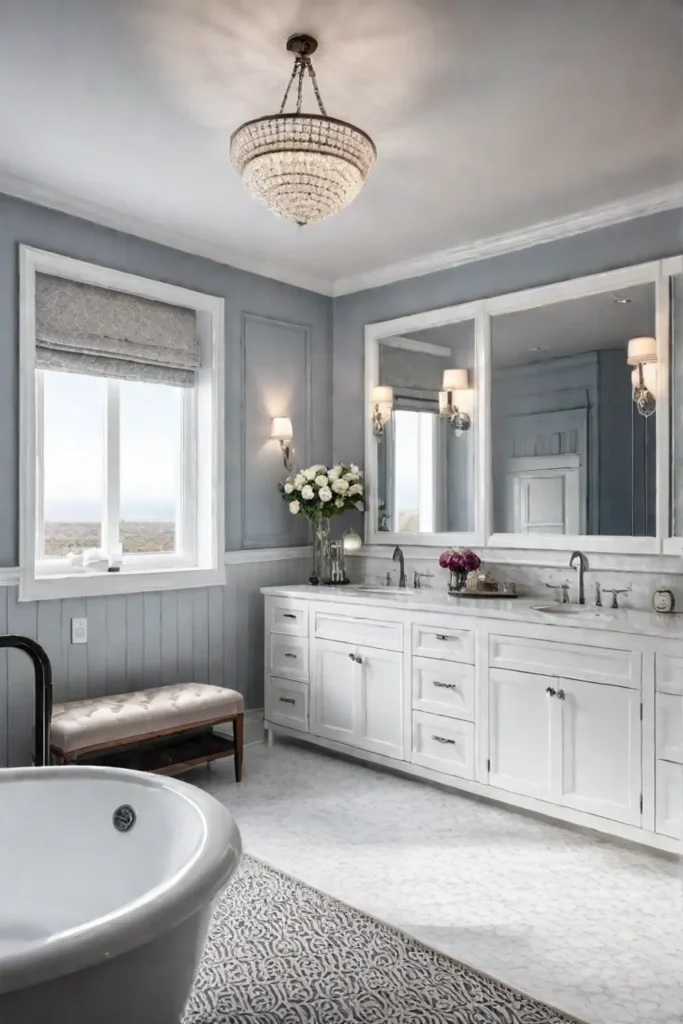
Moving Beyond Subway Tile
While subway tile remains a popular choice, there’s a whole new world of options for creating a visually striking bathroom. One of the biggest shifts we’re seeing is the emergence of new tile shapes, sizes, and textures.
The classic 3×6 subway tile format has evolved into a wide range of sizes, from slim 2×8 tiles to oversized 6×12 formats. And it’s not just the dimensions that are changing – designers are also experimenting with unique shapes like hexagons, arabesque, and penny rounds. These innovative tiles can add depth, movement, and personality to your bathroom walls and floors.
But it’s not just the tile itself that’s transforming bathroom design. Homeowners also embrace natural stone, wood, and metallic finishes to create a warm, textural look. Marble, granite, and soapstone offer a luxurious, timeless aesthetic, while reclaimed wood and wood-look tiles can add rustic charm. And don’t forget about the impact of metals like brass, copper, and stainless steel – they can provide a sophisticated, high-end touch when used for fixtures, hardware, and accents.
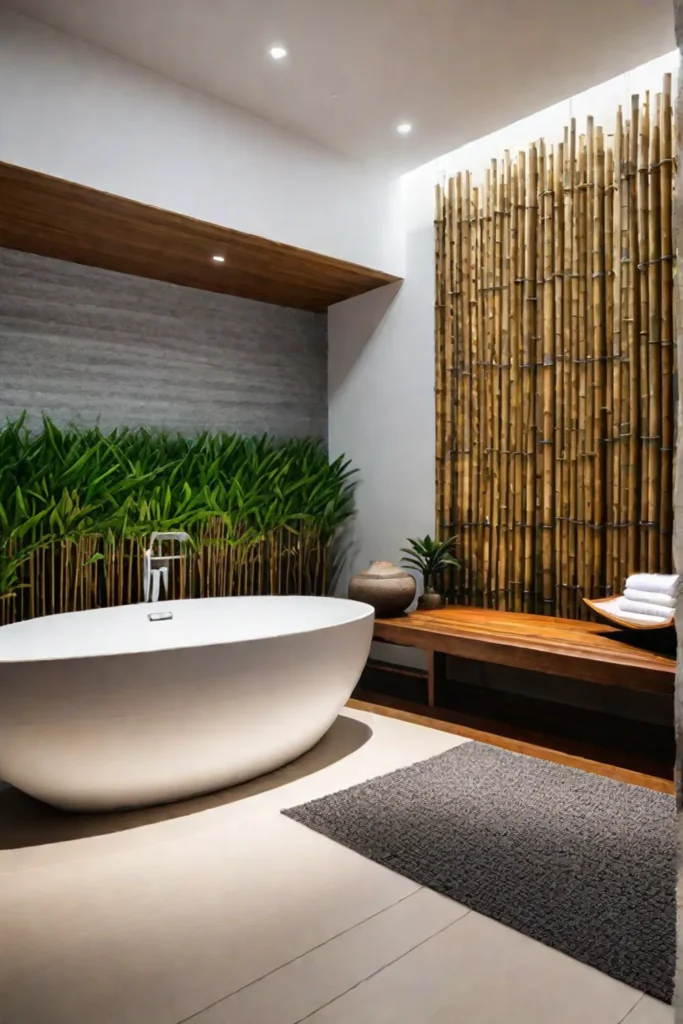
The best part? You don’t have to stick to a single material or pattern. Mixing and matching different tile types, finishes, and sizes can create a custom, eclectic feel. Herringbone, chevron, and other intricate layouts can elevate a bathroom’s style and personality. And large-format tiles or slabs can create a sleek, minimalist look.
Embracing a Wider Range of Bathroom Materials
While tile will always be a bathroom staple, homeowners increasingly look beyond traditional ceramic options to create their dream spaces. Natural stone, wood, and metal are all gaining popularity as primary materials for vanities, floors, and accent pieces.
Natural stone, like marble, granite, and soapstone, offers a timeless elegance that instantly elevates a bathroom’s style. With its unique veining and hues, Marble is a classic choice that exudes sophistication. On the other hand, Granite is known for its durability and resistance to scratches and stains, making it a practical option for high-use areas like vanity tops and floors.
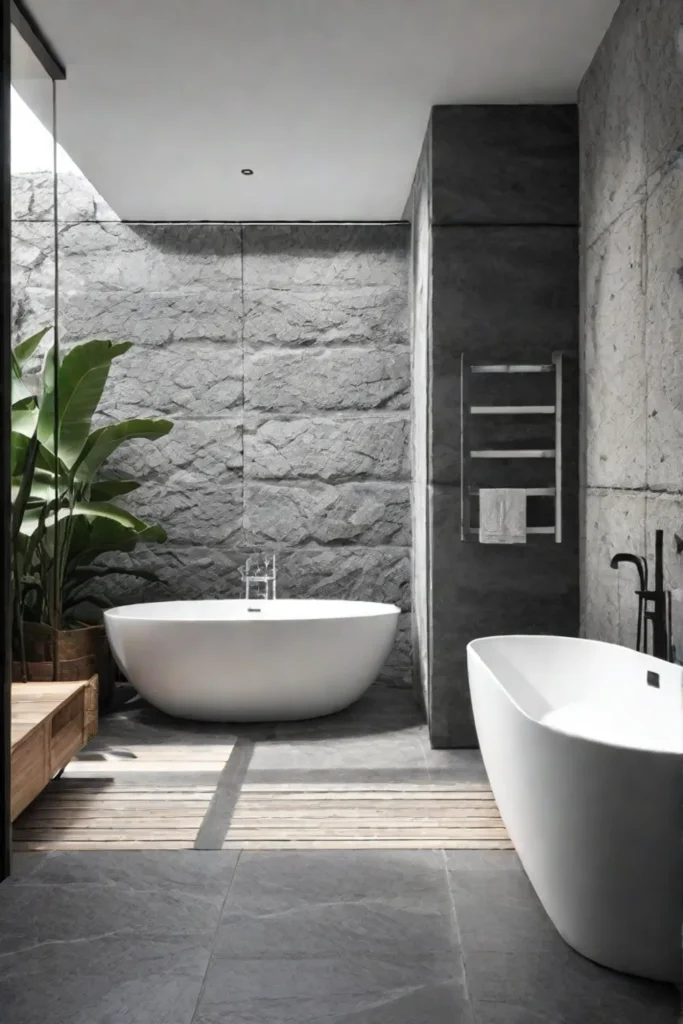
Soapstone is another natural stone that’s experiencing a resurgence in bathroom design. This dense, non-porous material is beautiful and highly resistant to heat, scratches, and stains. Its smooth, velvety texture and unique aesthetic can add a touch of warmth and character to any bathroom.
Wood and wood-look materials are also becoming more prevalent in bathroom design, helping to create a cozy, spa-like atmosphere. Reclaimed wood, with its rustic charm and imperfections, can be used for vanities, shelves, and flooring. Wood-look tiles, which offer the aesthetic of real wood without maintenance requirements, are popular for those seeking a natural, organic feel.
Metallic finishes, such as brass, copper, and stainless steel, are another way to add a touch of sophistication to your bathroom. These materials can be used for fixtures, hardware, and accessories, complementing tile or stone and elevating the overall design.
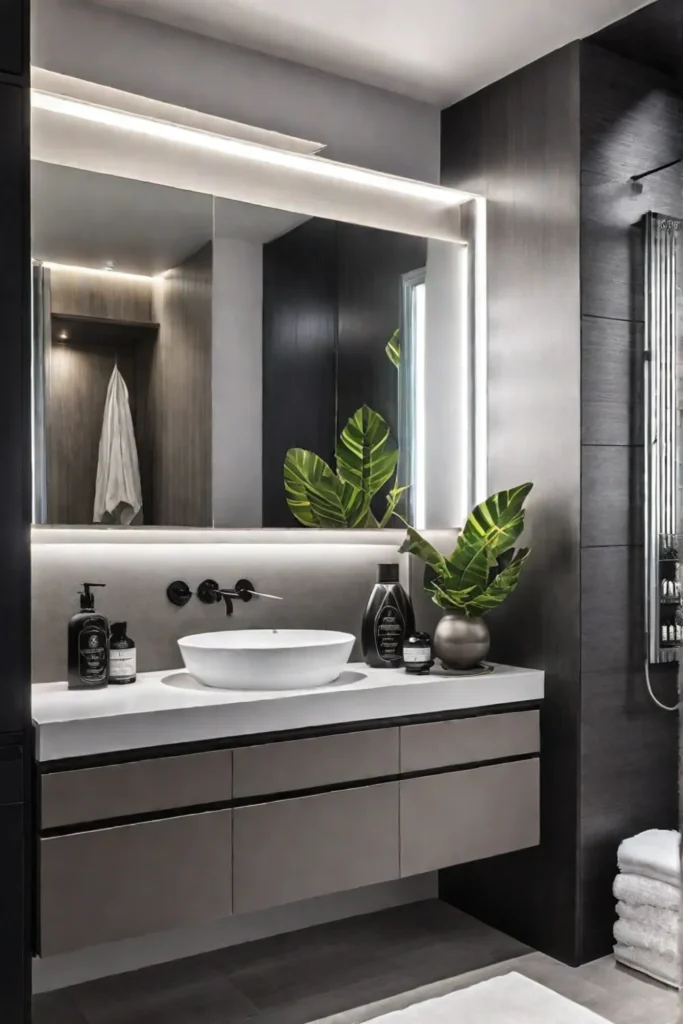
Of course, when incorporating these non-traditional materials into your bathroom, it’s important to consider the maintenance and care requirements. Natural stone, wood, and metal may require different cleaning and sealing techniques than standard tile. But with the right approach, you can create a unique and beautiful bathroom that reflects your style.
Evolving Bathroom Fixtures and Fittings
As the bathroom design landscape evolves, so do the fixtures and fittings that define its functionality and style. From innovative showerhead and faucet designs to the rise of smart home technology, there’s a wealth of options for enhancing your bathroom’s form and function.
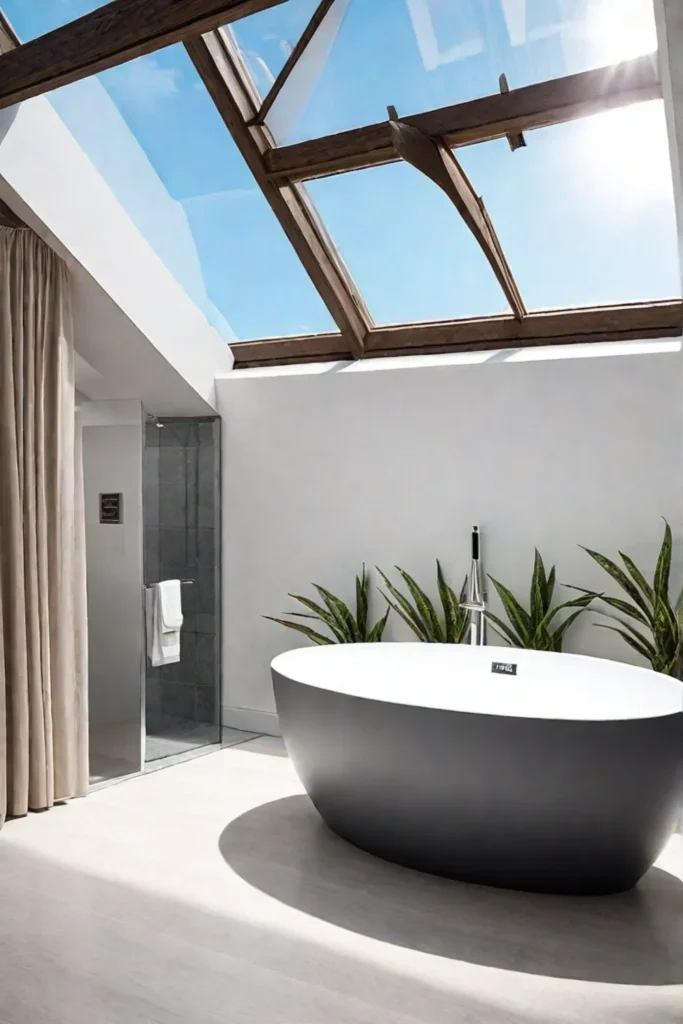
One of the most significant trends in bathroom fixtures is the focus on water conservation and sustainability. Some modern showerheads, for instance, can reduce water consumption by up to 30% compared to traditional models, making them an eco-friendly choice for homeowners. Incorporating rainfall or waterfall showerheads can create a luxurious, spa-like experience without sacrificing water efficiency.
Smart home technology also enters the bathroom, offering homeowners increased convenience and comfort. Voice-activated and app-controlled features like lighting and temperature are becoming more common in high-end homes. Imagine adjusting the bathroom’s ambiance with a simple voice command or tapping your smartphone – no more fumbling for switches in the dark!
Beyond the high-tech upgrades, there’s also a growing emphasis on balancing form and function in bathroom fixtures. Sleek, minimalist faucets can offer modern aesthetics and water-saving capabilities, while smart showerheads can provide a luxurious experience while conserving water. It’s all about finding the perfect blend of style and sustainability.
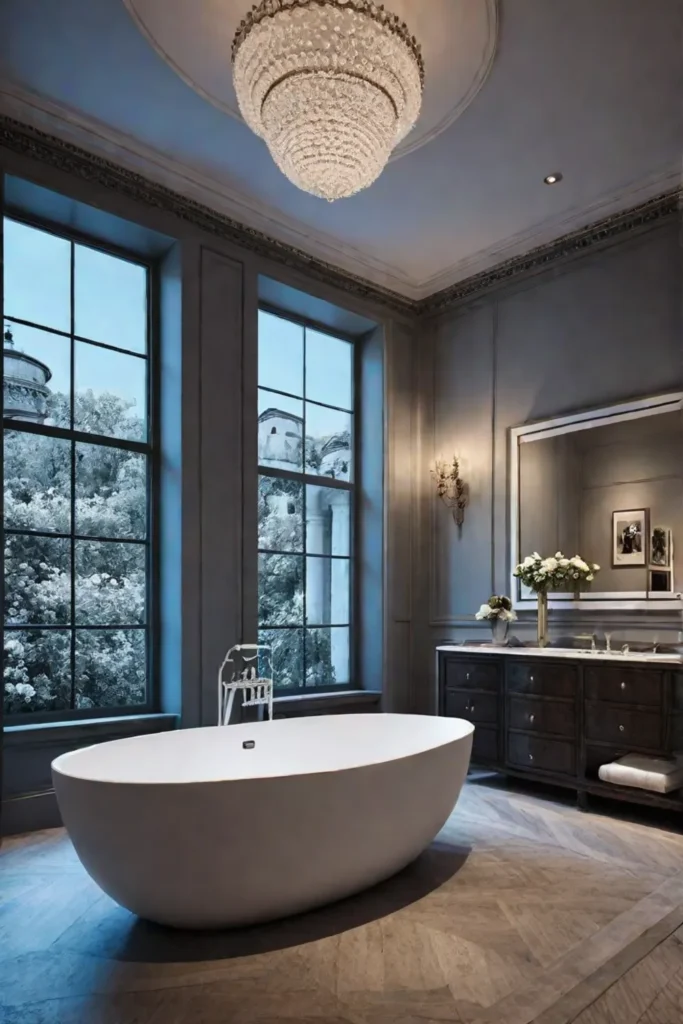
Of course, as with any smart home integration, there are potential drawbacks, such as privacy concerns and the need for reliable internet connectivity. But for those willing to embrace the latest bathroom technology, the benefits of increased convenience and energy efficiency can be worth the investment.
Blending Bathroom and Bedroom Design
The line between the bathroom and bedroom is becoming increasingly blurred as homeowners seek to create a cohesive, spa-like retreat within the master suite. This trend is driven by the desire to transform the bathroom into a true oasis of relaxation and comfort, where the practical needs of the space are seamlessly integrated with the cozy, inviting atmosphere of the bedroom.

One key aspect of this design approach is the increased integration of bedroom furnishings and decor into the bathroom. Plush bedding, cozy seating areas, and even televisions are finding their way into these once purely functional spaces, creating a more luxurious and hotel-like experience. The goal is to make the bathroom feel like an extension of the bedroom rather than a separate, utilitarian space.
To achieve this, designers create a smooth transition between the two areas, using consistent color schemes, materials, and decor elements to tie the spaces together. This might involve incorporating the same wood tones or metallic accents in the bathroom and bedroom or using complementary textiles and soft furnishings to create a cohesive aesthetic.
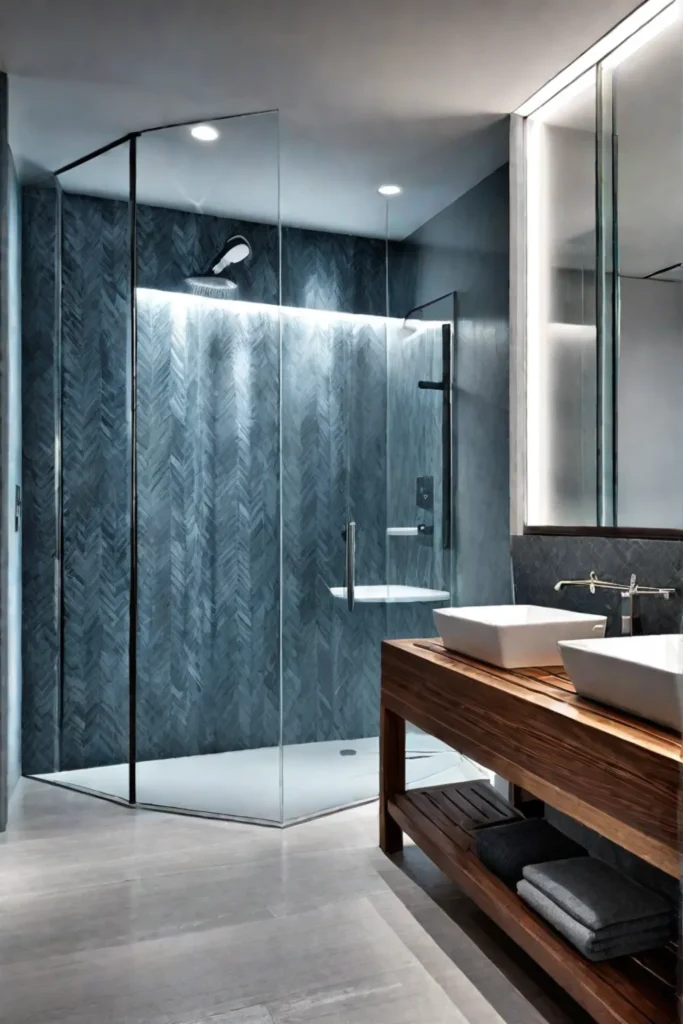
The result is a master suite that feels like a true personal retreat, where the boundaries between the bathroom and bedroom are blurred, and the overall atmosphere is one of relaxation and rejuvenation. This trend speaks to the growing desire for homeowners to create a sanctuary within their homes where they can unwind and recharge in a space that caters to both their practical and emotional needs.
Personalizing the Master Bathroom
As homeowners seek to create truly unique and personalized spaces, the master bathroom has become a canvas for self-expression and customization. By incorporating personal style and preferences, customized storage and organization solutions, and one-of-a-kind design elements, homeowners can transform their bathrooms into a reflection of their taste and lifestyle.
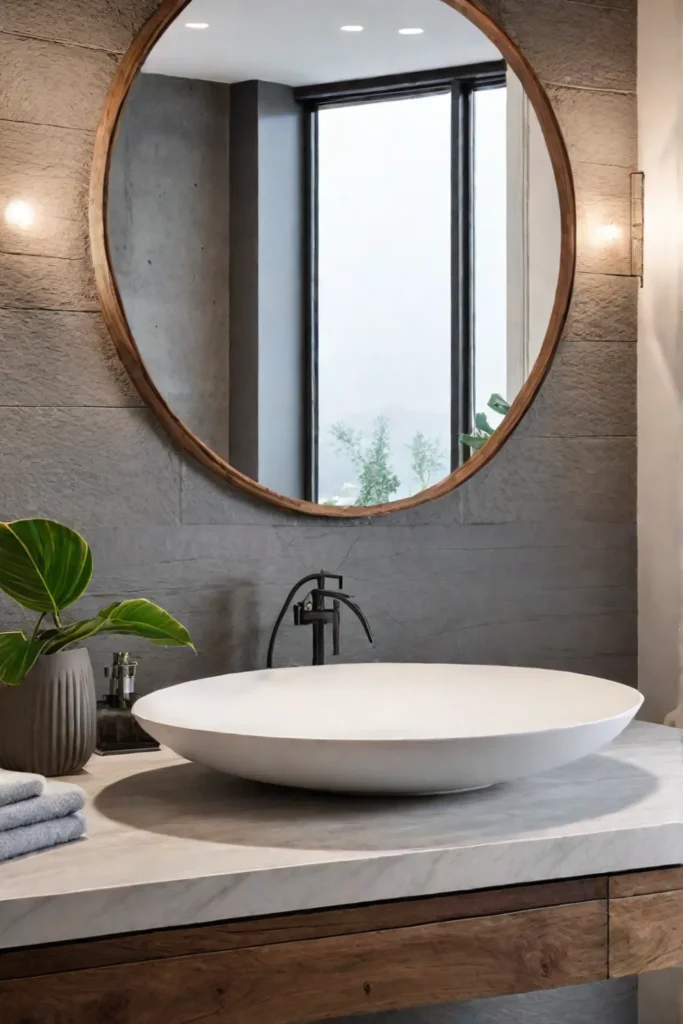
One key way to achieve this level of personalization is by carefully balancing personal style with timeless design principles. This might involve choosing a color palette that speaks to your aesthetic while also creating a clean and serene atmosphere. Or it could mean selecting materials and fixtures that complement your existing bedroom decor while still adhering to best practices for bathroom design.
Custom-built vanities, cabinetry, and storage solutions are also becoming increasingly popular as homeowners seek to optimize the functionality and visual appeal of their master bathrooms. By designing custom storage solutions tailored to their specific needs, homeowners can create a highly practical space that is uniquely theirs.
But the real magic happens when homeowners incorporate unique design elements and unique features. These could be anything from a statement freestanding tub to a custom-designed light fixture. They might even involve displaying personal collections, such as artwork or vintage decor, to infuse the space with their individual personality.
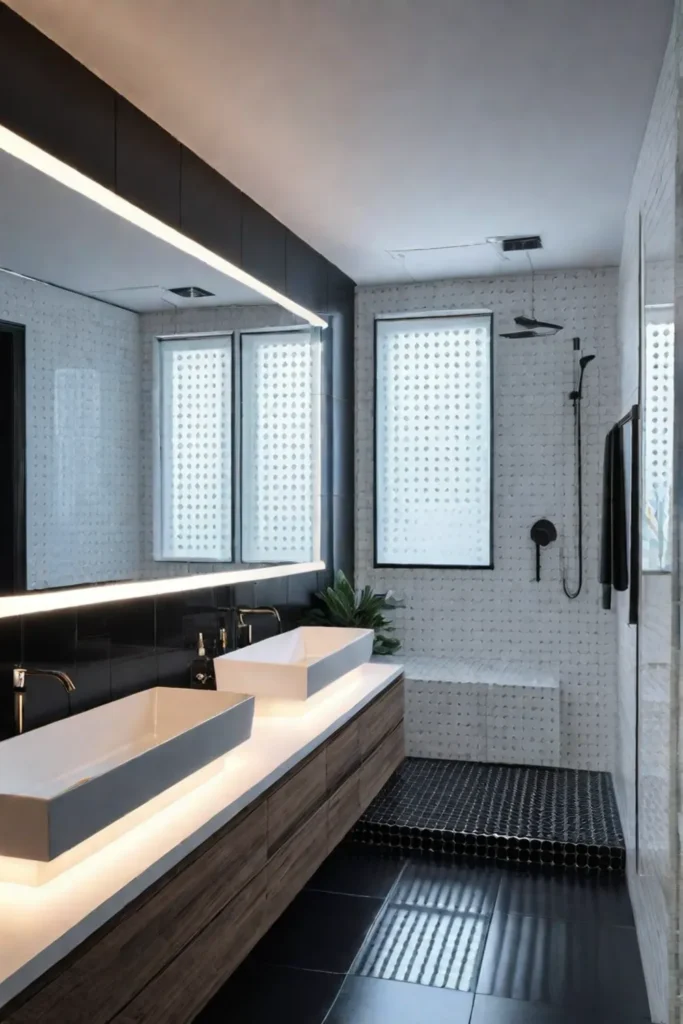
The key is embracing your creativity and letting your style shine through. After all, your master bathroom should reflect your unique aesthetic and lifestyle – a private oasis that you look forward to retreating to, day after day.
Sustainability and the Modern Bathroom
As environmental consciousness grows, homeowners increasingly seek sustainable and eco-friendly solutions for their bathroom designs. From water-efficient fixtures to the use of natural, renewable materials, there are numerous ways to create a bathroom that is both stylish and environmentally responsible.
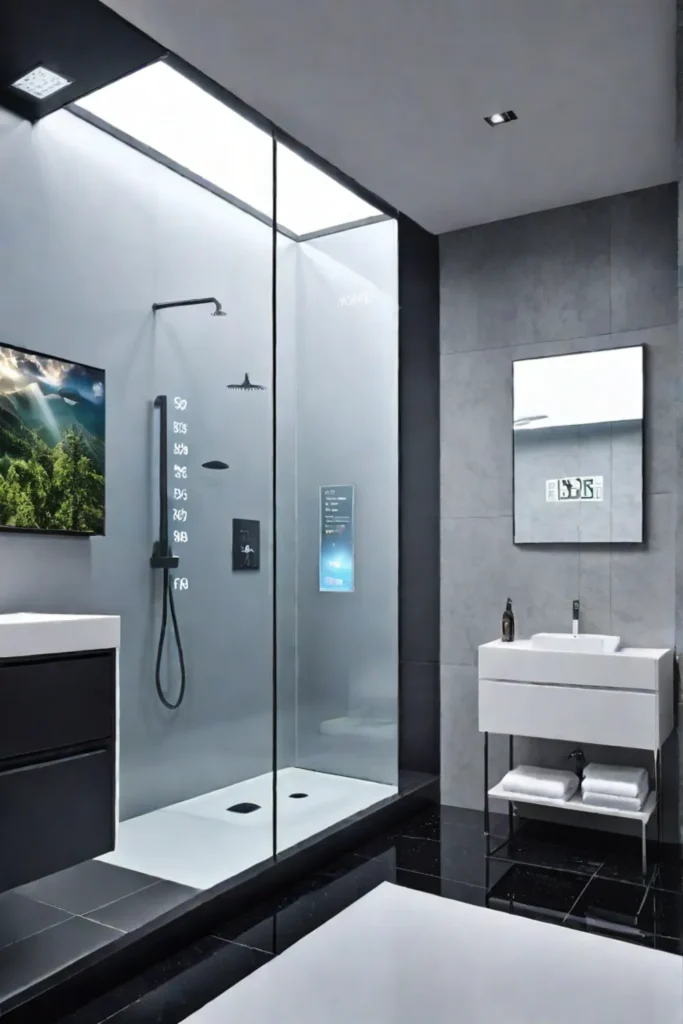
One of the most significant focus areas regarding sustainable bathroom design is using water-efficient fixtures and appliances. By selecting WaterSense-certified faucets, showerheads, and toilets, homeowners can dramatically reduce their water usage without sacrificing performance or aesthetic appeal. These high-efficiency fixtures can save money on utility bills and help minimize their environmental impact.
But it’s not just about the fixtures – the materials used in the bathroom can also play a crucial role in sustainability. Natural, renewable materials like bamboo, cork, and reclaimed wood are becoming increasingly popular for bathroom vanities, flooring, and accents. These materials add a warm, organic feel to the space and have a lower environmental footprint than many traditional bathroom materials.
It’s not just about what goes into the bathroom—it’s also about what comes out of it. Homeowners are exploring energy-efficient lighting and ventilation solutions to reduce the bathroom’s energy consumption and carbon footprint. LED bulbs, for example, can provide bright, long-lasting illumination while using a fraction of the energy of traditional incandescent bulbs.

Of course, balancing the desire for luxury and style with the need for eco-friendly design can be a delicate dance. But with a little creativity and a focus on sustainable solutions, homeowners can create a visually stunning and environmentally responsible bathroom. After all, who says you can’t have it all?
The Future of Bathroom Design
As technology advances and consumer preferences evolve, the future of bathroom design is poised to become even more innovative and transformative. From integrating smart home features to emerging cutting-edge materials, the possibilities for creating a truly futuristic and personalized bathroom are endless.
Integrating smart home technology is one of the most exciting developments in bathroom design. Voice-activated controls, self-cleaning toilets, and built-in air purification systems are just a few of the features already making their way into high-end bathrooms. Imagine being able to control the lighting, temperature, and even the cleanliness of your bathroom with the simple sound of your voice or the tap of a smartphone app. It’s a level of convenience and automation unimaginable just a few years ago.
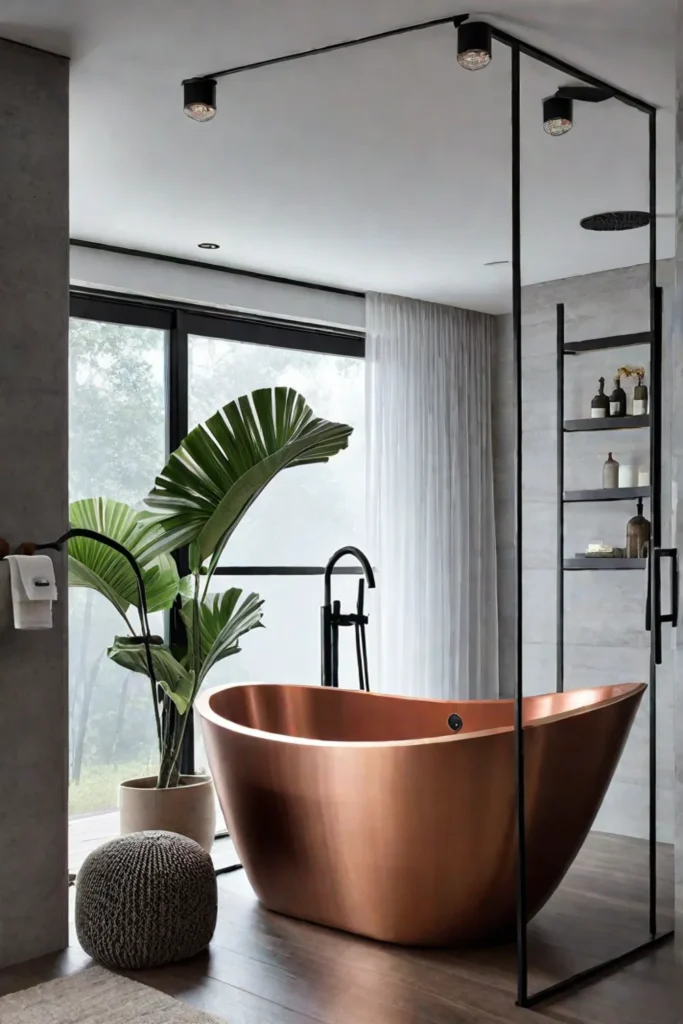
But it’s not just the technological advancements shaping the future of bathroom design – it’s also the emergence of innovative new materials. Self-healing concrete, for instance, could revolutionize how we think about bathroom surfaces, offering a durable and low-maintenance solution that can repair itself over time. And self-cleaning glass, with its ability to repel dirt and grime, could significantly reduce the time and effort required to keep your bathroom sparkling clean.
As consumer preferences evolve, we’re also likely to see a greater emphasis on wellness and sustainability in bathroom design. Homeowners increasingly seek features promoting relaxation, rejuvenation, and environmental responsibility, such as heated floors, rain showerheads, and energy-efficient lighting. With the growing popularity of minimalist and eco-conscious design, we may even see a shift towards more streamlined, uncluttered bathroom spaces that prioritize functionality and sustainability over opulence.

Ultimately, the future of bathroom design is about pushing the boundaries of what’s possible. Whether it’s through the integration of cutting-edge technology, innovative materials, or wellness-focused features, the goal is to create bathrooms that are visually stunning, highly personalized, practical, and environmentally responsible. So if you’re dreaming of a bathroom that’s truly future-forward, the possibilities are endless – all you have to do is let your imagination run wild.
Conclusion
The modern bathroom has evolved far beyond the classic white subway tile, with new materials, fixtures, and design trends transforming how we think about these essential spaces. By exploring alternative tile options, embracing a wider range of bathroom materials, and incorporating smart home features and sustainable solutions, homeowners can create truly unique and personalized master bath retreats.
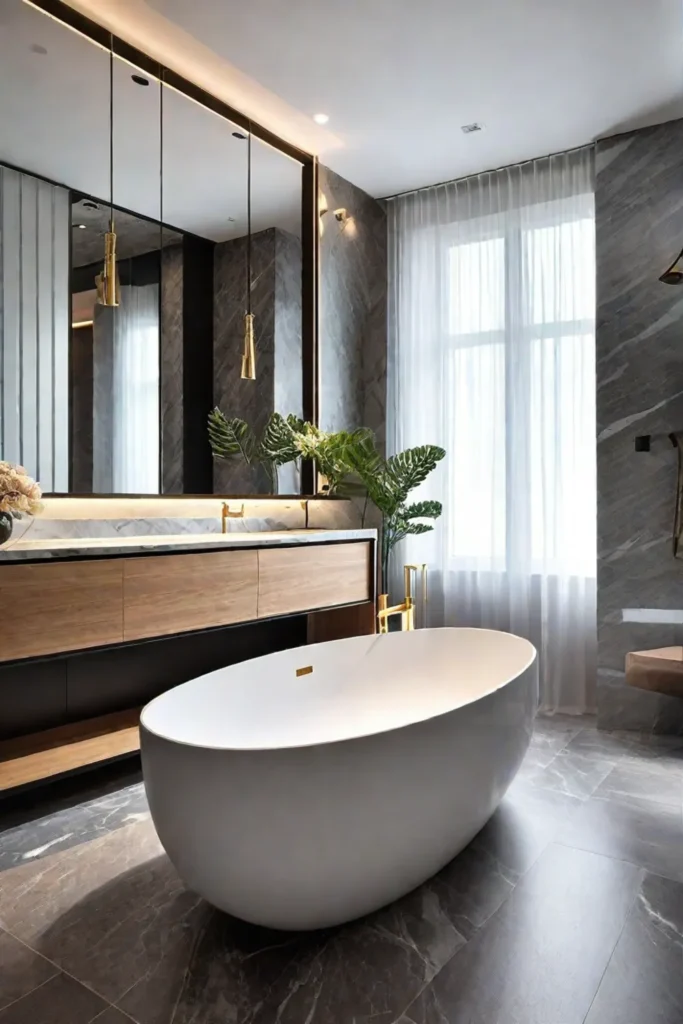
Whether you’re drawn to the sleek, minimalist look of large-format tiles, the warm, organic feel of natural stone and wood, or the high-tech convenience of voice-activated controls, the possibilities for creating your dream bathroom have never been more exciting. As the future of bathroom design unfolds, you can expect to see even more innovative and transformative solutions that cater to your style, practical needs, and commitment to sustainability.
So why settle for a boring, one-size-fits-all bathroom when you can have a space that truly reflects your unique personality and lifestyle? Start exploring the latest design trends, get inspired, and get ready to transform your master bath into the ultimate oasis of relaxation and self-expression.
